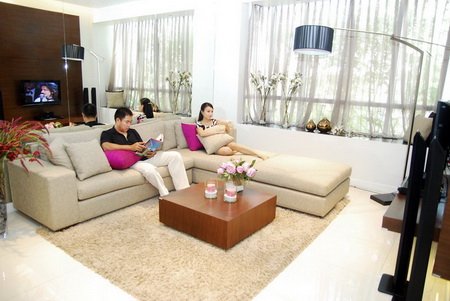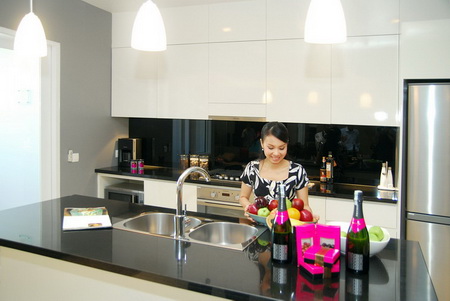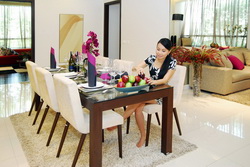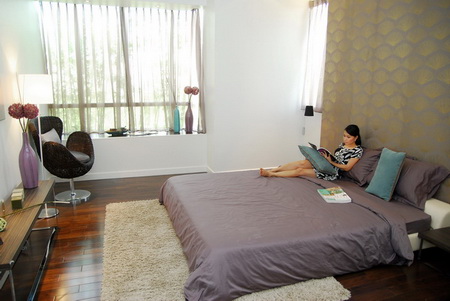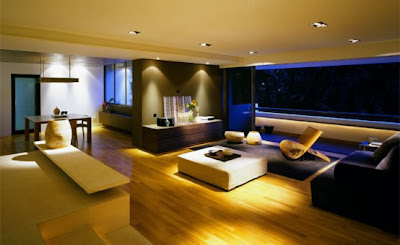
Omiros One Architecture, O1A, designed this five bedroom luxury residence that commands endless ocean views form atop a steeply inclined site on Hamilton Islands in the heart of Australia’s Great Barrier Reef. The Ala Moana house, that takes its name form the Hawaiian term “ocean pathways”, combines a relaxed tropical resort ambience with luxury, sophistication, privacy and tranquility.
Here is the project concept:
The architectural design process involved meeting all objectives of the client brief whilst responding to the unique site conditions, environmental imperatives and planning requirements. The project was challenging on many different levels:
• the sloping terrain,
• the compelling views,
• the environmentally sensitive location,
• the requirement to integrate with its the natural setting
The house is sited and designed to maximize the views and take advantage of the uniqueness of the location and natural layout whilst:
• minimizing the impact on the land
• minimizing potential overlooking from future developments around it
• capturing the desired prevailing winds in summer
• minimizing exposure to the undesirable winter winds
One key issue considered by the architect was how the architecture could be viewed and appreciated by the visitor from close up on such a steep site. The solution was to design a meandering buggy path which approaches the house from below, a journey of discovery with different aspects, textures and functions unfolding slowly at close range, including such features as the stepped layout of the building and the sheet of water cascading down the slope and reflecting the sky from within. The pathway circumnavigates the building and brings the visitor to the entry where the glass-edged double doors allow the first glimpse of the best attribute of the site, the breathtaking view.
Once inside, the architecture becomes a series of frames for the view, working hand in hand with the surrounds to enhance the experience. The internal reflective pool rolls through the site to the open view at front, fusing with the sky and appearing to spill into the ocean beyond. The inside becomes the outside and the swimming pool becomes the focal point of the living space.
Another key concern of the design process was how to reduce the visual impact of the new structure. This was achieved by breaking down the mass of the building into smaller articulated parts; four main volumes of different heights, each crowned with curved, wing-like zinc roofs. These volumes are set at different levels to follow the natural ground slope with minimal cutting into the site; their materiality further reduced by opening large areas of the envelope with full-height glazed folding doors. The result is a lightness and transparency which is not typical of the dominant architectural character of the island.
The design responds to the orientation and microclimate of the site, drawing in the cooling ocean breezes from below via the rosewood-framed folding glass doors which open onto generous outdoor terraces, the infinity-edge pool and a lush garden backdrop. Summer shade is maximized by the generous roof overhangs, slatted cedar screens and strategically-placed trees which protect the privacy of the occupants within. Together with the harmonious exterior colour scheme, these elements diffuse the perimeter and help to integrate the building form with the natural character of the site. Where ever possible, materials were selected to meet sustainable criteria such as low embodied energy, low environmental impact and recyclability.
The building can be classified as both sea-side residence and luxury resort, of a typically Australian character, and Ala Moana evolves this specific typology through its seamless integration of indoor and outdoor living spaces, combination of spaciousness with private and intimate zones, resort grandeur with human scale, opulence with earthy tones and natural materials.








Special thanks to Chris Iatrou from Omiro One Architecture for sharing.
(theo http://coolboom.net)


